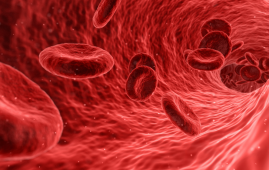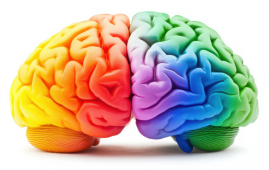

According to a new study from the University of Oulu in Finland, alterations in the physiological brain pulsations are linked to a high body mass index (BMI). These pulsations are essential for preserving the flow of cerebral fluid and removing metabolic waste from the brain.
Three forms of pulsations are seen in the brain: vasomotion, which is connected to rhythmic blood vessel oscillations, respiratory, which is driven by the heartbeat, and cardiac, which is linked to breathing cycles.
The Oulu Functional Neuroimaging (OFNI) research group at the University of Oulu revealed that a high BMI specifically enhances respiration-related brain pulsations. This work was published in the International Journal of Obesity. Simultaneously, arterial vasomotor waves slightly rise while pituitary gland and hypothalamus artery-induced pulsations diminish.
According to the research, obesity may interfere with essential metabolic functions and brain homeostasis.
The study examined the resting brain activity of 115 healthy adults using ultrafast MREG imaging. The results were more reliable because other variables known to link with BMI, such as age, gender, and blood pressure, were also considered. The findings show that a high BMI substantially affects cerebral pulsations in all areas of the brain.
Scholars stress that more attention needs to be paid to how obesity affects the brain in both scientific and therapeutic settings.
“Overweight is a risk factor for many brain and cardiovascular diseases. These research findings help us understand how overweight affects brain function and the associated neurological risks.
“These observations may also help develop new diagnostic tools and treatment methods for conditions such as memory disorders, which are often associated with overweight,” says Doctoral Researcher Lauri Raitamaa.
For more information: Association of body-mass index with physiological brain pulsations across adulthood – a fast fMRI study, International Journal of Obesity, https://doi.org/10.1038/s41366-024-01515-5
more recommended stories
 Fat-Regulating Enzyme Offers New Target for Obesity
Fat-Regulating Enzyme Offers New Target for ObesityKey Highlights (Quick Summary) Researchers identified.
 Spatial Computing Explains How Brain Organizes Cognition
Spatial Computing Explains How Brain Organizes CognitionKey Takeaways (Quick Summary) MIT researchers.
 Gestational Diabetes Risk Identified by Blood Metabolites
Gestational Diabetes Risk Identified by Blood MetabolitesKey Takeaways (Quick Summary for Clinicians).
 Phage Therapy Study Reveals RNA-Based Infection Control
Phage Therapy Study Reveals RNA-Based Infection ControlKey Takeaways (Quick Summary) Researchers uncovered.
 Pelvic Floor Disorders: Treatable Yet Often Ignored
Pelvic Floor Disorders: Treatable Yet Often IgnoredKey Takeaways (Quick Summary) Pelvic floor.
 Urine-Based microRNA Aging Clock Predicts Biological Age
Urine-Based microRNA Aging Clock Predicts Biological AgeKey Takeaways (Quick Summary) Researchers developed.
 Circadian Control of Neutrophils in Myocardial Infarction
Circadian Control of Neutrophils in Myocardial InfarctionKey Takeaways for HCPs Neutrophil activity.
 E-Cigarette Use and Heart Attack Risk in Former Smokers
E-Cigarette Use and Heart Attack Risk in Former SmokersKey Takeaways for Clinicians and Nurses.
 36-Week Pre-eclampsia Screening May Reduce Term Risk
36-Week Pre-eclampsia Screening May Reduce Term RiskA New Preventive Strategy for Term.
 Cardiovascular Risk and Sudden Cardiac Death in Diabetes
Cardiovascular Risk and Sudden Cardiac Death in DiabetesRising Sudden Cardiac Death (SCD) Risk.

Leave a Comment